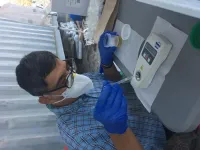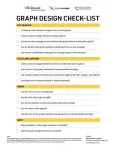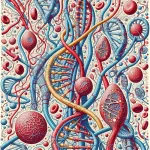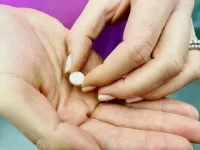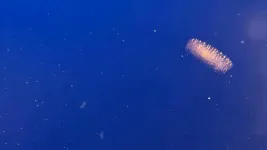(Press-News.org) Most of the white blood cells in your body are a type of cell called neutrophils. Despite their high numbers, they are less well understood than other immune cells, in part because they have very short lifespans: an average neutrophil lives for only eight hours. However, recent work has shown that neutrophils are very flexible cells, capable of dialing inflammation up or down, especially in the context of cancer. This makes them attractive targets for immunotherapy, which aims to tweak the immune system to more potently attack disease. But neutrophil-based therapies are still in their infancy.
A team from the Wyss Institute at Harvard University and Harvard’s John A. Paulson School of Engineering and Applied Sciences (SEAS) is helping advance neutrophil therapies to the crawling stage. In a recent paper published in Nature Biomedical Engineering, the researchers demonstrated that by attaching disc-shaped microparticles called “backpacks” to neutrophils, they could maintain the cells in their anti-tumor (N1) state. When these treated neutrophils were infused into mice with cancer, they activated other immune cells against the disease, including natural killer (NK) cells and T cells. Treated mice had smaller tumors and lived longer than untreated mice, and the results were even better when the backpack-bearing neutrophils were combined with common “checkpoint inhibitor” cancer drugs.
“Unlike in previous work from our lab where we filled the backpacks with stimulatory molecules that were delivered into immune cells to activate them, we discovered that just the act of attaching “empty” backpacks to neutrophils is enough to activate them – making this technique attractive as a “drug-free” cell therapy for cancer,” said first author Ninad Kumbhojkar, Ph.D., a former graduate student at the Wyss and SEAS who is now a scientist at Tessera Therapeutics.
Teaching an old backpack new tricks
Neutrophils have been used for more than 40 years to help boost the immune systems of cancer patients who are receiving chemotherapy, which depletes their bodies’ ability to fight infections. But deploying neutrophils to directly target cancer itself is uncharted territory that Kumbhojkar and his co-authors decided to explore, using the backpack technology pioneered in the lab of Wyss Core Faculty member Samir Mitragotri, Ph.D.
Backpack microparticles have been previously used to influence the behavior of immune cells called macrophages, successfully activating them to treat cancer, multiple sclerosis, and traumatic brain injury in animal models. Recent research has revealed that neutrophils are similar to macrophages in that they can be in either a pro-inflammatory or anti-inflammatory state. Since they could successfully control macrophages’ state with their backpacks, the researchers had a hunch that the approach should also work on neutrophils.
When neutrophils physically encounter a foreign object that is too large for them to engulf, such as a splinter or a surgical implant, they undergo a series of biological changes that alert the body’s immune system to the threat. The researchers had to design a backpack that was large enough to trigger this response, but small enough to move with the neutrophils and not impede their normal functions. They crafted a new type of backpack they called Cyto-Adhesive Micro-Patches, or CAMPs: disc-shaped microparticles composed of a blend of two polymers. Unlike previous backpacks, CAMPs do not contain any biologically active chemicals designed to be delivered into their host cells. To help the CAMPs attach to the neutrophils, they added a fragment of an antibody that would bind to a specific protein found on the cells’ surfaces.
The researchers mixed CAMPs with fresh mouse neutrophils, and saw that they readily stuck to the cells without harming them. CAMP-bearing neutrophils rapidly released several molecules indicative of activation against immune threats, both in the lab and when injected into mice. They also found that CAMPs caused over 4,000 genes in the neutrophils to be expressed differently than untreated neutrophils. Specifically, neutrophils with CAMPs expressed more genes associated with the anti-tumor state, as well as genes coding for pro-inflammatory cytokines. When co-cultured with other immune cells including CD8+, T cells, NK cells, dendritic cells, and macrophages, CAMP-bearing neutrophils activated them as well.
When they performed similar experiments with human neutrophils in vitro, they observed similar effects, suggesting the results could translate to humans.
The tumor test
The CAMPs now faced the ultimate test: keeping neutrophils activated in the presence of immune-suppressive cancer tumors in vivo. When CAMP-bearing neutrophils were injected into mice with melanoma, the levels of multiple inflammatory cytokines in the animals’ blood increased, and imaging tests showed that the neutrophils migrated to the site of the tumor within four hours (data that were replicated in a breast cancer model). Neutrophils were also observed in high numbers in the animals’ spleens and tumor-draining lymph nodes, and CD8+, T cells, and NK cells in the blood, spleen, and tumors were activated. None of these results were observed in mice treated with non-CAMP neutrophils.
The mice with melanoma that received CAMP-bearing neutrophils displayed much slower tumor growth rates, and mice with breast cancer that received the treatment had a longer survival time, with complete regression of cancer achieved in 15% of the animals.
When the researchers combined their neutrophil treatment with a standard checkpoint inhibitor drug for cancer (aCTLA-4), mice with melanoma displayed significantly slowed tumor growth and improved survival rates. 67% of the animals survived beyond 40 days, and 33% achieved complete remission within 60 days. When these mice were rechallenged with another melanoma tumor, none of them developed cancer a second time, indicating that their immune systems had generated a robust anti-tumor memory response.
“Part of the beauty of this neutrophil-based cancer treatment is that it does not require any genetic engineering or modification of the therapeutic cells before they are infused, which can greatly cut down on the processing time for getting lifesaving treatments into patients’ bodies,” said senior author Mitragotri, who is also the Hiller Professor of Bioengineering and Hansjörg Wyss Professor of Biologically Inspired Engineering at SEAS. “It could even be administered at a patient’s bedside within hours, compared to the 14-16 days required for current cell therapy manufacturing techniques.”
The researchers point out that they only incubated neutrophils with CAMPs for two hours before infusing them into mice, and that further studies are needed to determine how long the treated cells can be maintained before infusion. Members of the Mitragotri lab are continuing to explore neutrophils’ ability to treat other cancers including glioblastoma, as well as using their backpacks to sandwich different immune cell types together to improve their delivery to their target tissues.
“The Mitragotri lab’s backpack technology is the gift that keeps on giving. Its ability to produce potent anti-cancer effects without the need for expensive biotherapeutics or genetic engineering, using material properties alone, is both astounding from a scientific perspective and hugely important in terms of its potential clinical and commercial value. We’re proud to have such an innovative group as part of the Wyss community,” said Wyss Founding Core Faculty member Don Ingber, M.D., Ph.D., who is also the Judah Folkman Professor of Vascular Biology at Harvard Medical School and Boston Children’s Hospital, and the Hansjörg Wyss Professor of Bioinspired Engineering at SEAS.
This research was supported by Harvard SEAS, the Wyss Institute for Biologically Inspired Engineering, and the National Science Foundation Graduate Research Fellowship under Grant No. 1122374.
Additional authors of the paper include Supriya Prakash, Tatsuya Fukuta, Kwasi Adu-Berchie, Neha Kapate, Rocky An, Solomina Darko, Vineeth Chandran Suja, Kyung Soo Park, Alexander Gottlieb, Michael Griffith Bibbey, Malini Mukherji, Lily Li-Wen Wang, and Wyss Core Faculty member David Mooney.
END
Empty “backpacks” activate the immune system against cancer
Neutrophils bearing polymer microparticles can be harnessed as a drug-free way to shrink tumors
2024-03-19
ELSE PRESS RELEASES FROM THIS DATE:
Dehydration is rampant among Florida farm workers, new study shows
2024-03-19
Nearly all farm workers who participated in a recent study in Florida were dehydrated at the end of their shifts, and more than half were still dehydrated the following morning.
The study, a partnership between the University of Illinois Chicago and the Farmworker Association of Florida, used urine samples collected first thing in the morning, at lunch and at the end of a shift to assess the risk of dehydration over five days in May 2021 and May 2022 at a vegetable farm in southern Florida. A total of 111 workers, most of them men from Mexico and Guatemala, participated in the study, which is published in the journal ...
Climate change graphics are important, so make them simple
2024-03-19
When the “hockey stick” graph, which illustrated a steep increase in global temperatures, was published in 1998, it reshaped the world’s understanding of climate change. A quarter-century later, with climate change now wreaking havoc around the world, graphics depicting global warming are more important than ever to inform policymaking.
However, a recent USC-led study reveals that some graphics developed for reports by the Intergovernmental Panel on Climate Change (IPCC) are too complex, even for the intended audiences of policymakers and practitioners.
Researchers recommend limiting each graphic, which the IPCC refers to as “figures,” ...
Rising rates of head and facial injuries from exercise and weightlifting
2024-03-19
Waltham — March 18, 2024 — Numbers of craniofacial injuries related to exercise and weightlifting have increased sharply over the past decade, reports a study in The Journal of Craniofacial Surgery. The journal is published in the Lippincott portfolio by Wolters Kluwer.
"Incidence of craniofacial injury significantly increased between 2013 and 2022, illuminating the need for better education and risk mitigation strategies," according to the new research by Rohan Mangal, MSc, and colleagues of University of Miami. Rates of exercise-related head and facial injuries appear higher for men than women, and ...
A breakthrough in solid-state electrolytes for all-solid-state batteries: Twice the quality with streamlined processes
2024-03-19
Korea Electrotechnology Research Institute (KERI) has reached a significant milestone with the publication of a groundbreaking study in a globally esteemed journal, marking a crucial stride toward the commercialization of all-solid-state batteries, free from the inherent risks of explosion and fire.
Dr. Park Jun-woo of the KERI Next-Generation Battery Research Center and Sung Junghwan (student researcher at the UST KERI Campus) have successfully engineered a revolutionary technology. This technology, focused on the "size-controlled ...
Circulating tumor DNA levels predict treatment outcomes for patients with gastroesophageal cancer treated with a novel immunotherapy combination
2024-03-19
Monitoring levels of DNA shed by tumors and circulating in the bloodstream could help doctors accurately assess how gastroesophageal cancers are responding to treatment, and potentially predict future prognosis, suggests a new study led by researchers at the Johns Hopkins Kimmel Cancer Center and its Bloomberg~Kimmel Institute for Cancer Immunotherapy.
The study tracked minimal residual disease (the amount of cancer left following treatment) by analyzing circulating tumor DNA (ctDNA), showing how these ...
Association between miR-492 rs2289030 G>C and susceptibility to neuroblastoma in Chinese children from Jiangsu province
2024-03-19
Neuroblastoma is a heterogeneous solid tumor that originates extracranially from neuroblasts. Previous research has demonstrated that miR-492 polymorphisms can contribute to cancer susceptibility. However, their specific involvement in susceptibility to neuroblastoma has yet to be fully clarified.
Background and objectives
Neuroblastoma is a heterogeneous solid tumor that originates extracranially from neuroblasts. Previous research has demonstrated that miR-492 polymorphisms can contribute to cancer susceptibility. However, their specific involvement in susceptibility to neuroblastoma has yet to be fully clarified.
In this study, we focused on miRNA-492, which has been reported to ...
Choosing over the counter drugs for COVID 19? It’s complicated
2024-03-19
COVID-19 illness may include symptoms such as a sore throat, fever, cough and fatigue. In January, the United States Centers for Disease Control and Prevention (CDC) issued its most recent guidelines for the use of over the counter (OTC) drugs for COVID-19. Specifically, its guidelines state that most people with COVID-19 have mild illness and can recover at home while treating symptoms with OTC medicines such as acetaminophen (Tylenol) or ibuprofen (Motrin, Advil).
Researchers from Florida Atlantic University’s Schmidt College ...
Binghamton University’s Speech and Language Pathology program receives accreditation candidacy
2024-03-19
BINGHAMTON, N.Y. -- The new Master of Science in Speech and Language Pathology (MS-SLP) program at Binghamton University’s Decker College of Nursing and Health Sciences has achieved a significant milestone toward accreditation by the Council on Academic Accreditation in Audiology and Speech-Language Pathology (CAA). The council recently awarded the program accreditation candidacy for five years, beginning Feb. 1, 2024, and running through Jan. 31, 2029.
The decision was based on a thorough review of all candidacy materials for the program, including the application, site visit report and the program’s ...
Characterizing salps as predators of marine microbes
2024-03-19
A huge fraction of global flows of carbon and other nutrients passes through marine microbes, little is known about their causes of death—information that in many cases determines where those nutrients will go. Recent work on microbial death via viral lysis and protistan predation is helping close the gap, but there remains a missing source of microbial mortality. Anne Thompson and colleagues explore the role played by salps, pelagic tunicates that feed by pumping seawater through mucous mesh nets, filtering out and capturing particles such as preferred microbes. Salps send ...
Four PPPL researchers featured in the Physics of Plasmas Early Career Collection
2024-03-19
The U.S. Department of Energy’s Princeton Plasma Physics Laboratory (PPPL) made a strong showing in this year’s Early Career Collection from the scientific journal Physics of Plasmas. The collection represents the top papers from all areas of plasma physics research authored by people who defended their dissertations less than five years before the journal article was submitted.
“The first authors of the pieces in the 2023 Early Career Collection have made a notable contribution to the field of plasma and show significant promise. I look forward to ...
LAST 30 PRESS RELEASES:
New study highlights link between eviction rates and gun violence
Heatwaves heat up soil but not toxin levels in rice, study finds
Digital modeling reveals where construction carbon emissions really come from
Turning farm waste into water filters
New study shows how the spleen helps the immune system accept a transplant
New Mayo Clinic study advances personalized prostate cancer education with an EHR-integrated AI agent
Researchers identify novel therapeutic target to improve recovery after nerve injury
Microbes in breast milk help populate infant gut microbiomes
Reprogramming immunity to rewrite the story of Type 1 diabetes
New tool narrows the search for ideal material structures
Artificial saliva containing sugarcane protein helps protect the teeth of patients with head and neck cancer
Understanding the role of linear ubiquitination in T-tubule biogenesis
Researchers identify urban atmosphere as primary reservoir of microplastics
World’s oldest arrow poison – 60,000-year-old traces reveal early advanced hunting techniques
Bristol scientists discover early sponges were soft
New study uncovers how rice viruses manipulate plant defenses to protect insect vectors
NSF–DOE Vera C. Rubin Observatory spots record-breaking asteroid in pre-survey observations
Ribosomal engineering creates “super-probiotic” bacteria
This self-powered eye tracker harnesses energy from blinking and is as comfortable as everyday glasses
Adverse prenatal exposures linked to higher rates of mental health issues, brain changes in adolescents
Restoring mitochondria shows promise for treating chronic nerve pain
Nature study identifies a molecular switch that controls transitions between single-celled and multicellular forms
USU chemists' CRISPR discovery could lead to single diagnostic test for COVID, flu, RSV
Early hominins from Morocco reveal an African lineage near the root of Homo sapiens
Small chimps, big risks: What chimps show us about our own behavior
We finally know how the most common types of planets are created
Thirty-year risk of cardiovascular disease among healthy women according to clinical thresholds of lipoprotein(a)
Yoga for opioid withdrawal and autonomic regulation
Gene therapy ‘switch’ may offer non-addictive pain relief
Study shows your genes determine how fast your DNA mutates with age
[Press-News.org] Empty “backpacks” activate the immune system against cancerNeutrophils bearing polymer microparticles can be harnessed as a drug-free way to shrink tumors
